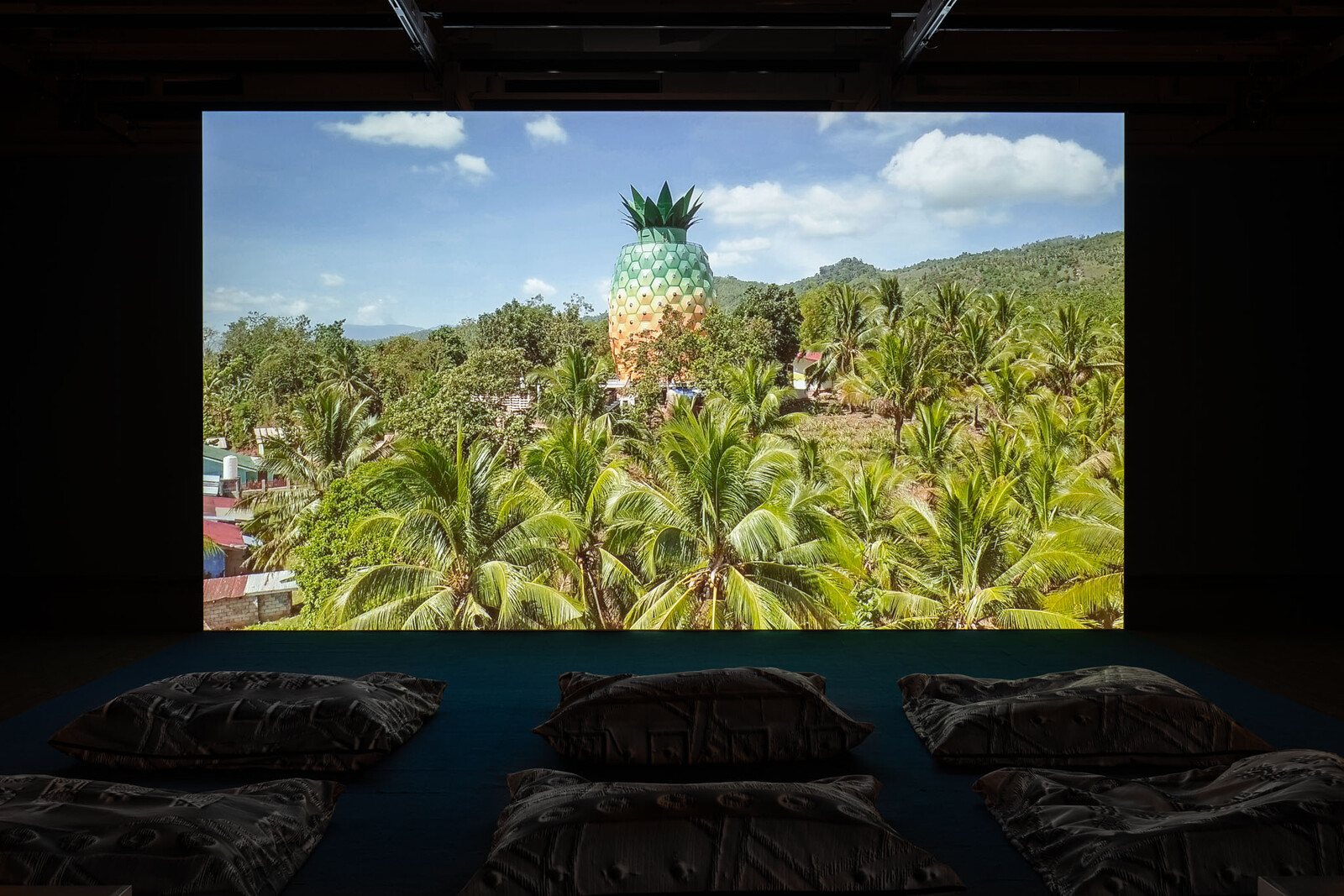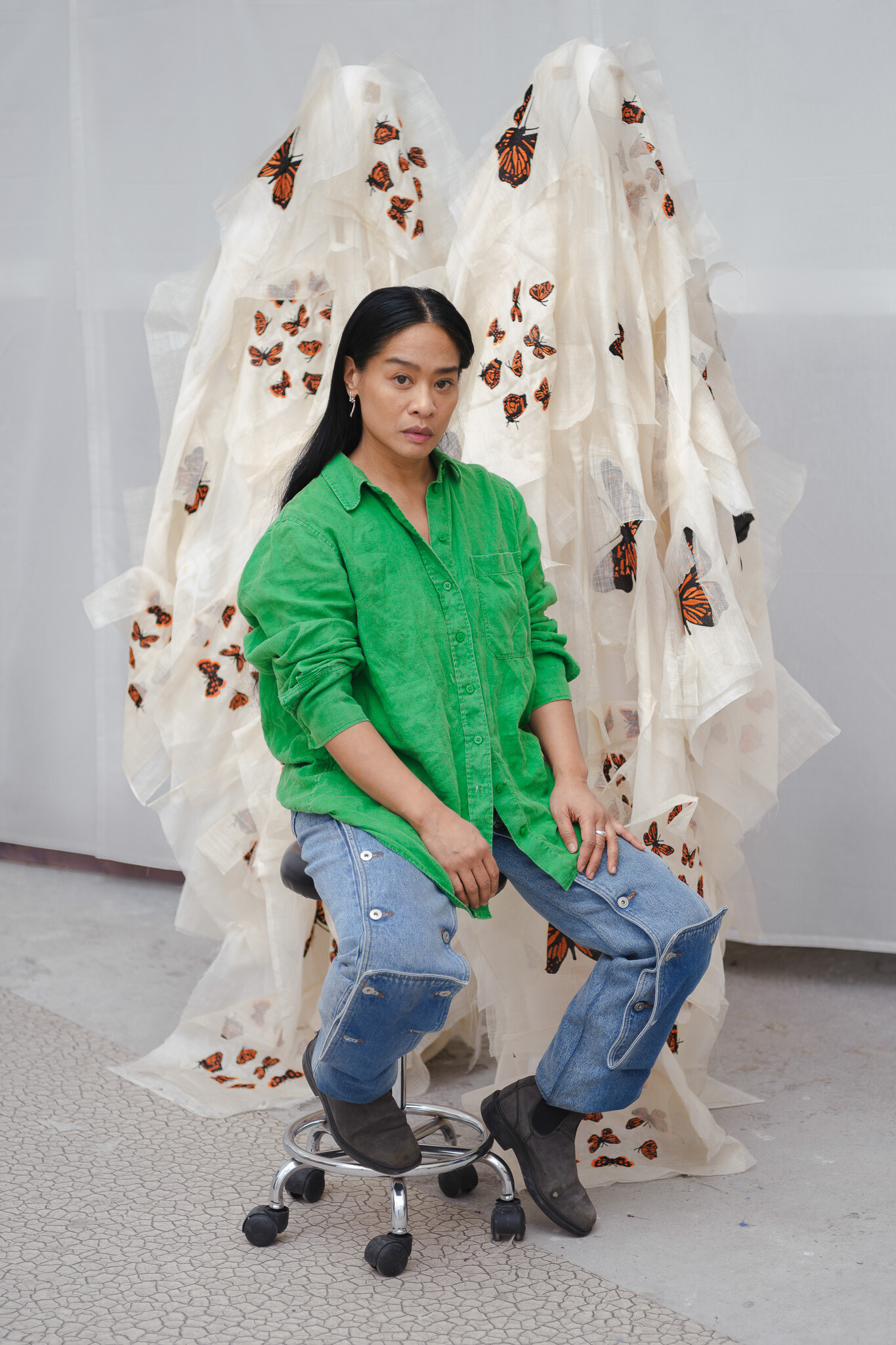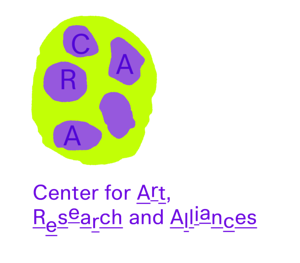An Apparition, A Song
May 31–August 10, 2025
225 West 13th Street
New York, NY 10011
USA
Hours: Wednesday–Saturday 11am–6pm,
Sunday 12–6pm
CARA’s summer 2025 exhibition, Stephanie Comilang: An Apparition, A Song, is Stephanie Comilang’s first solo institutional exhibition in the United States. Comilang contemplates migratory experiences, collective memory, intergenerational exchanges, and remnants of colonization through her investigations of labor, economy, and technology. Gathering decades of research and collaborative work—including film installations, virtual reality, and textile works—the exhibition amplifies perspectives often erased from dominant histories, emphasizing modes of creation and mutual support across temporalities and geographies.
Known for making films that incorporate documentary and science fiction elements, Comilang stitches together drone vistas, vlog vignettes, and livestreams to create a visual lexicon that juxtaposes lo-fi authenticity with technological possibility. Drawing upon the translocal experiences of diasporic communities, her works materialize personal narratives, colonial histories, and global trade. In this exhibition, viewers will experience the immersive intimacy of POV smart glasses alongside everyday materials; cardboard shipping boxes and textiles function as soft architectures of memory, carrying social and personal accounts across borders. With these materials, Comilang reimagines the testimonies of migratory workers, artists, and knowledge-keepers to create a dialogue between past, present, and future.
The exhibition opens with Piña, Why is the Sky Blue?, 2022, an immersive installation in which Comilang and her collaborator Simon Speiser consider the transnational histories of the piña, or pineapple fiber, through film, virtual reality (VR), and textile works. Brought to the Philippines from South America by the Spanish, the pineapple bears traces of colonization. In the film and VR works, the piña represents a collective spirit that transcends time and space, calling to mind matriarchal lineages across generations. The adjacent textiles—made of pineapple fiber, embellished with digital embroidery, and featured in the film—evoke feminist labor and craftsmanship. Comilang’s work with these materials extends from the research of her films and kindles renewed possibilities for joy, imagination, and collective movement amidst systems of control.
CARA’s upstairs galleries feature two more video installations that invite viewers to reimagine shared histories of isolation and displacement. In Lumapit Sa Akin, Paraiso (Come to me Paradise), 2016, an omniscient drone spirit, Paraiso, narrates her own experiences of separation and loneliness, which she counters with Sunday trips to central Hong Kong, where she is able to reconnect with Filipina migrant workers and transmit their messages back home. The three channel video installation is projected across a space cushioned with cardboard floor covering—a nod to the makeshift shelters in which the workers gather, paint their nails, gossip, and dance.
Search for Life II, 2025, also weaves together human and non-human stories of labor and diaspora. Considering histories of pearl diving across the Philippines, the Persian Gulf, and China, the single channel video installation acknowledges the pearl as both an object of currency and a symbol of possibility. Comilang considers histories of pearling—from sea farming Indigenous and Muslim-Filipino communities on Mindanao, the second largest island in the Philippines, to Gulf states, where pearling emerged as an economic force in the nineteenth and early twentieth centuries. Traversing familiar geographies, ocean currents, and embodied memories, Search for Life II invites conversations about these natural rarities, the extractivist industries formed around them, and the lives spent harvesting them at sea.
Intertwining snapshots of quotidian social life with acts of fugitivity, Comilang explores the connections between people, their homelands, and their livelihoods alongside the natural worlds and economic systems they inhabit. In An Apparition, A Song, the personal and the communal are reshaped and resituated beyond expectations, surfacing layered memories, aspirations, and systems of kinship.
Stephanie Comilang: An Apparition, A Song is curated by Rahul Gudipudi, Director of Exhibitions and Fellowships, with Marian Chudnovsky, Curatorial Assistant, and Agustin Schang, Head of Production. Accompanying public programs are organized with Emmy Catedral, Bookstore Director.


